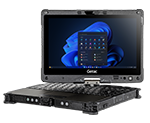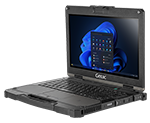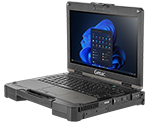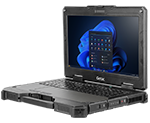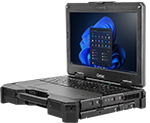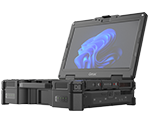Time is money in the competitive world of vehicle after-sales. Thus, boosting vehicle throughput has a favorable effect on the effectiveness of the shops. Otherwise, workshop waste causes businesses to collapse. Auto repair management software can be helpful here.
Retention of customers is a positive factor for auto repair shops. Keeping clients in section two is more difficult once the warranty has expired. Customers compare prices and convenience when shopping.
What steps can you take to improve customer satisfaction? Developing a differentiated product is something your customers expect. However, providing them personalized experiences can create loyal customers who keep returning. Your business's data from customer visits and conversation frequency are critical, as customer churn happens when you can't adapt to changes in the market quickly enough. Sort out your customer retention strategy, then provide a referral.
Delivering excellent customer support experiences is vital to customer success and retention. This retention correlates directly to ROI. It is 6-7 times more expensive to acquire a new customer than to retain repeat customers.
In addition, achieving a 5% retainer boost can grow your business by 25-95% through improved customer relationships. Introducing additional auto repair shop management software in businesses has its benefits. It can help collect customer data and direct it to a central database for control and validation.
Holger Hedtke is from Autohaus Hedtke, a Volvo dealer in Germany. In an interview, he discussed the benefits of using software to manage auto repair shops and retain customers. Some highlights of the experience are described below. If you are interested in reading the full article, download the white paper here:
What is an Auto Repair Shop Management Software?
It is helpful to review what an "auto repair shop management software" is before diving deeper into its features and benefits. The software inputs the complete end-to-end aftersales process for a seamless and paper-free operation, such as:
- Predictive marketing
- Customer service/booking
- Vehicle health inspections (precheck and PMS)
- Workshop loading & task assignment
- Maintenance schedules, Ops codes, and technician clocking
- Links to parts for pricing and inventory
- Online customer estimates
- Automated job progress (customer & internal notifications)
- Connects workshop equipment
- Connects technical publication platforms
- Portal for interactions with customers
Converting these workflows from traditional paper to digital has many benefits. Real-time availability of technical and operational information is a click away. This data gives the service management team the visibility and control to make the right decisions and save time.
The available information also gives the technicians a holistic view of the vehicle history and OE bulletins. With those insights, technicians can begin the triage, diagnosis, and treatment cycle efficiently and accurately.
Core Features of an Auto Repair Shop Management Software
Franchised dealers and independent auto repair shops will use different equipment for their products and services. They will also have varying levels of expertise and access to manufacturer systems. There are standard features an AWMS should have to provide to the service teams and customers. Many features correlate to the tasks.
- Software user interface. Software should contain a simple but flexible user interface. It should allow the service team to fulfill tasks and interface with the customer quickly. The software should be able to run on both Windows and Android. This flexibility enables support of the hardware strategy and integration with third-party systems.
- Integration is key. There are many sources of data a service operation may need to operate effectively. These can include OE technical, warranty, and parts systems.
- Connect with ERP or DMS. The auto repair shop management software must also connect with the ERP or DMS system. This integration helps with invoicing and back office functions such as HR and Finance. Connecting the applications automatically will eliminate double-keying and manual entry. It should be connected two-way and in real-time.
- Digital Aftersales Customer Journey. The auto repair shop management software should cover the main touchpoints of the customer journey from booking. These include service reception and drop-off to automated status updates through WhatsApp, SMS, or email.
- Digital Health Check Report. An online digital health check report with information such as estimations, supporting imagery, video, and animation is helpful. The report provides the customer with complete transparency and the ability to approve and pay online. It is best practice to make the reports available via a business intelligence (BI) dashboard to stay on top of the business.
- Highly configurable. No two auto repair businesses are the same. The mechanic shop management software should be able to adapt to your standards and preferred workflows. Admin rights and the ability to tune the system should be readily available. Providing the local service facility with these permissions will allow for a high degree of autonomy and limit the need to rely on software producers.
The automotive mechanic software should be technologically stable. It should have the functionality to automate your workflows and remove repetitive tasks from the service team. Introducing algorithms and an AI-based approach saves significant time.
Added Benefits of an Intelligent Mechanic Repair Software Solution
Like any software-enhanced process, assessing the ROI from implementing a new solution is critical. The white paper summarizes Autohaus Hedtke's observed results:
- Reduced time – Hedtke estimated the technology saved 25% of working hours. Service reception and management teams save time by automating repetitive and manual tasks.
- Increased efficiency – The shop realized a 10% efficiency improvement. The intelligent planning software reduced idle time and improved worker application.
- Increased customer retention – These workable improvements can improve customer retention by decreasing customer wait time and keeping them updated on the status throughout the day.
As a result, the shop personnel can focus on categorizing customer experience and upsell communication and conversions. In addition, the customer experience can be more streamlined by automating the required workshop processes.
Management Software Pricing Models
Flexible pricing models are an additional advantage for shop owners who adopt auto shop management software. Several vendors offer subscription options as businesses expand and evaluate the degree of software capacity.
Moreover, lifetime licenses are also available for businesses that know they need the product and have the resources to offer IT support.
Takeaways
Choosing the right auto repair software can feel overwhelming. Knowing the possible and essential features the tool can provide is an effective way to determine which is most beneficial for your team and organization.
Furthermore, automating repetitive tasks humans tend to dislike can improve staff morale. It can also enhance the customer experience, create higher upsell opportunities, and maximize profit. Automation accomplishes these tasks by delivering higher efficiency and throughput, reduced downtime, and vital customer retention.


